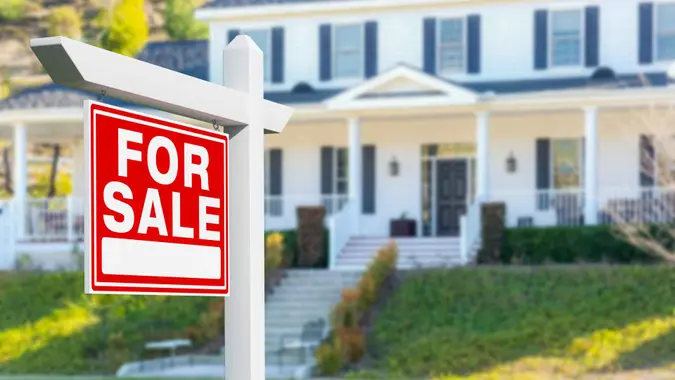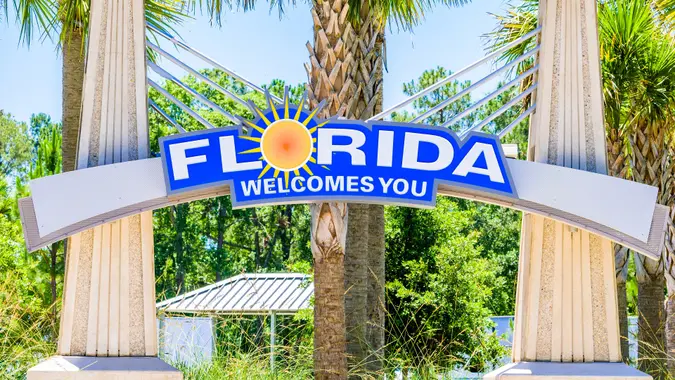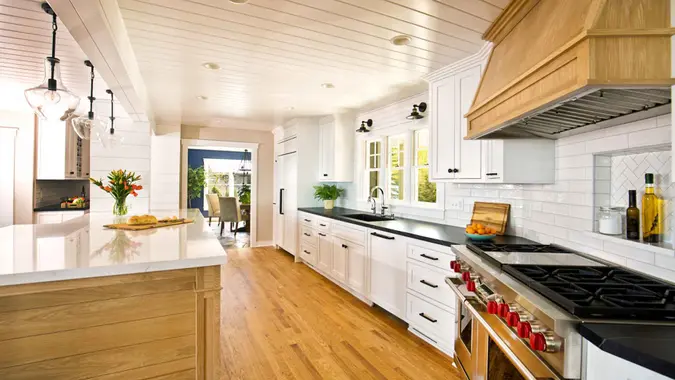Housing Market 2023: Prices and Interest Rates Are Skyrocketing — Can Owner Financing Help?

Commitment to Our Readers
GOBankingRates' editorial team is committed to bringing you unbiased reviews and information. We use data-driven methodologies to evaluate financial products and services - our reviews and ratings are not influenced by advertisers. You can read more about our editorial guidelines and our products and services review methodology.

20 Years
Helping You Live Richer

Reviewed
by Experts

Trusted by
Millions of Readers
The cost to buy a home in the United States continues to push higher due to the combination of historically high home prices and rising mortgage rates. One result is that lending standards are stricter than they used to be, leaving many would-be buyers at risk of not securing mortgage loans with traditional lenders. In this case, you might consider owner financing.
With owner financing, also known as seller financing, you purchase the home directly from the seller at terms that you both agree on, according to Lending Tree. After the paperwork is signed, you move into the home and take over possession.
As with traditional mortgage loans, you’ll make monthly loan payments to the seller, who acts as your lender. Unlike some mortgage loans, however, property taxes and homeowners insurance aren’t included in the monthly payment, so you’ll have to make those on your own.
Owner financing might be the best (and only) option for certain buyers in the current market — especially as mortgage rates remain high. The average U.S. mortgage rate on a 30-year fixed rate mortgage was 6.78% as of July 20, 2023, according to Freddie Mac. That was down from the prior week, but above the 52-week average of 6.37% — and up from 5.54% the previous year.
Higher Rates Lead to Stricter Lending Practices
Higher rates mean bigger loans and higher monthly mortgage payments, which in turn mean stricter lending standards. As GOBankingRates previously reported, the average cost to finance a home soared to $323,780 in 2022 from $298,324 in 2021 — the biggest single-year increase since the Mortgage Bankers Association began tracking the metric.
Owner financing won’t do much to help with high home prices, but it can lower borrowing costs if the seller agrees to better terms than other lenders might offer. You also won’t have to worry about bank fees and might not have to pay appraisal or inspection fees either, Lending Tree noted.
Another advantage is that there are less strict credit standards with owner financing. In addition, it typically takes less time to approve an owner-financed loan than a traditional mortgage loan.
On the downside, you might not get better interest rates with owner financing, though it’s up to the specific seller. As Forbes recently reported, owner finance loans often have higher-than-average rates and include balloon payments due after at least five years.
With balloon payments, the buyer makes a single large payment at the end of the loan term to completely pay off the loan. That means you have a lot less time to pay the loan compared with 30- or 15-year mortgages. When the balloon payment comes due, you can either pay it in cash or refinance the remaining balance with a conventional loan.
Forbes offered the following example of how owner financing might work:
Suppose you want to buy a historic home that doesn’t qualify for a conventional mortgage due to its age and condition. You offer to buy the home for $80,000 with a $25,000 down payment, and the seller agrees to finance the remaining $55,000 at a 7% interest rate for a five-year term, amortized over 20 years.
This results in a balloon payment of about $47,000 due at the end of five years. Over the course of the loan, you make monthly payments of $426 and are responsible for property tax and insurance payments.
One thing to keep in mind is that the seller might also offer partial financing to the buyer, according to Lending Tree. For example, if you want to buy a $300,000 home and the lender will only provide $250,000, you could get owner financing for the remaining $50,000 as a second mortgage, as long as you can get lender approval.
More From GOBankingRates
 Written by
Written by  Edited by
Edited by 

























